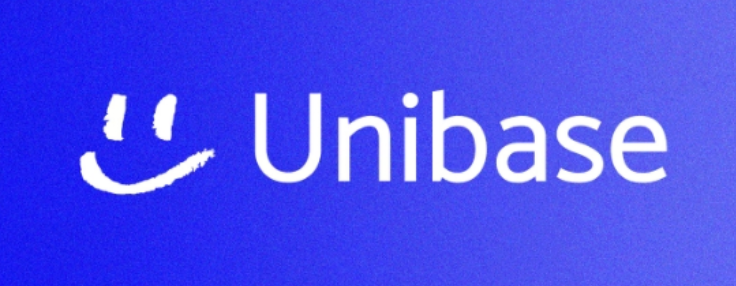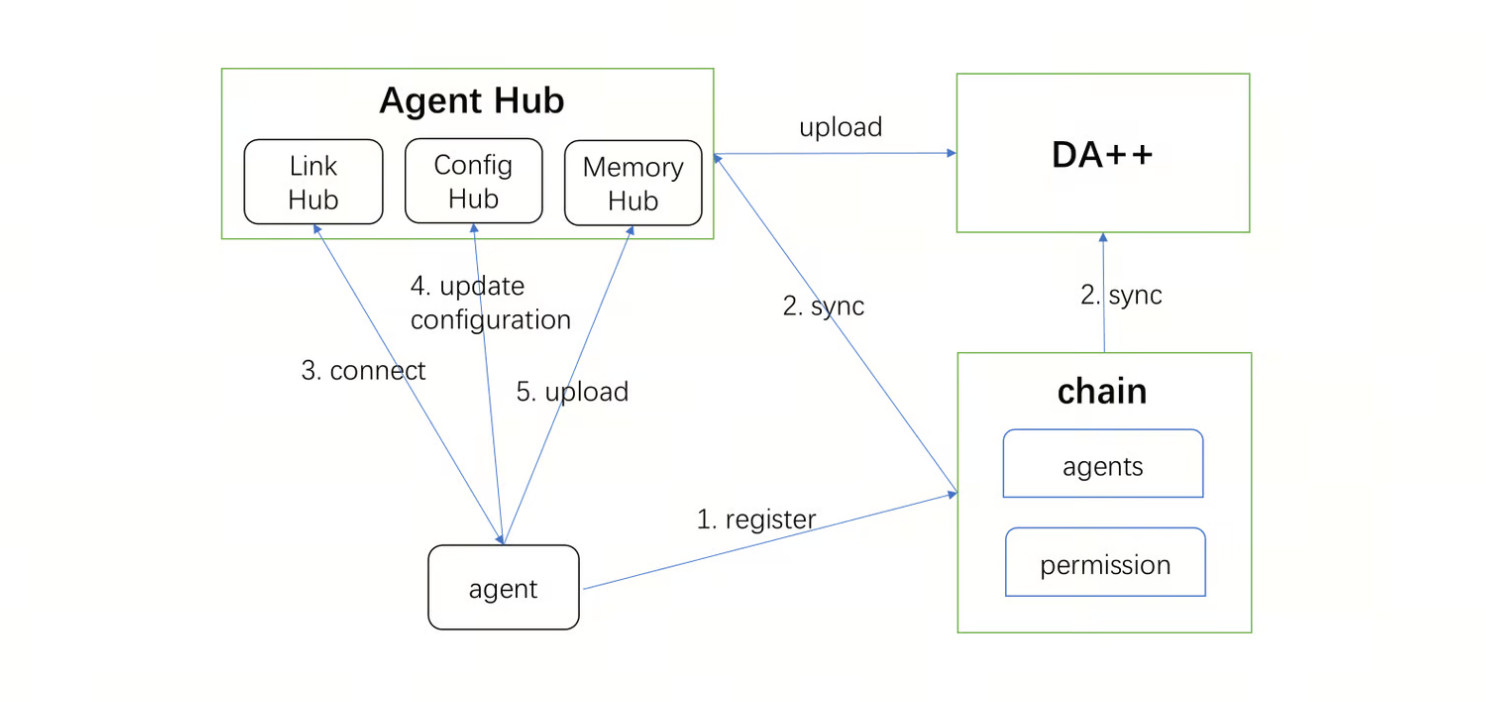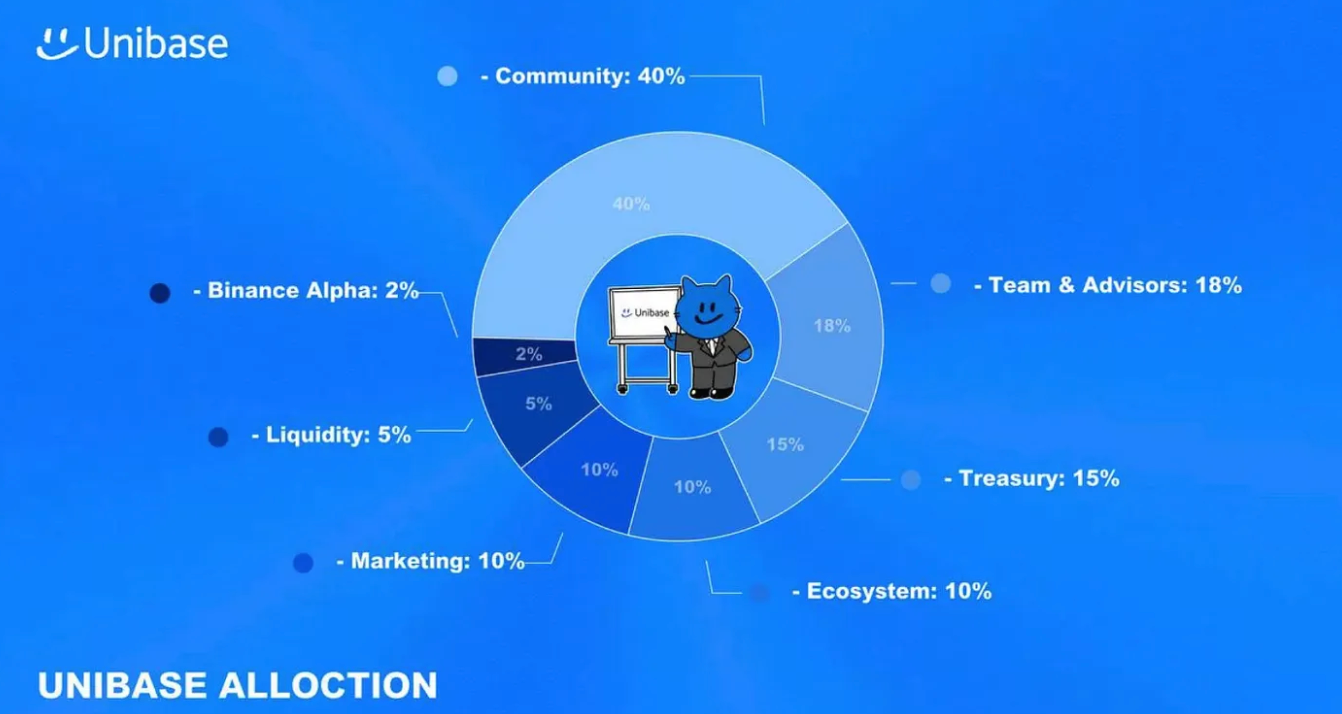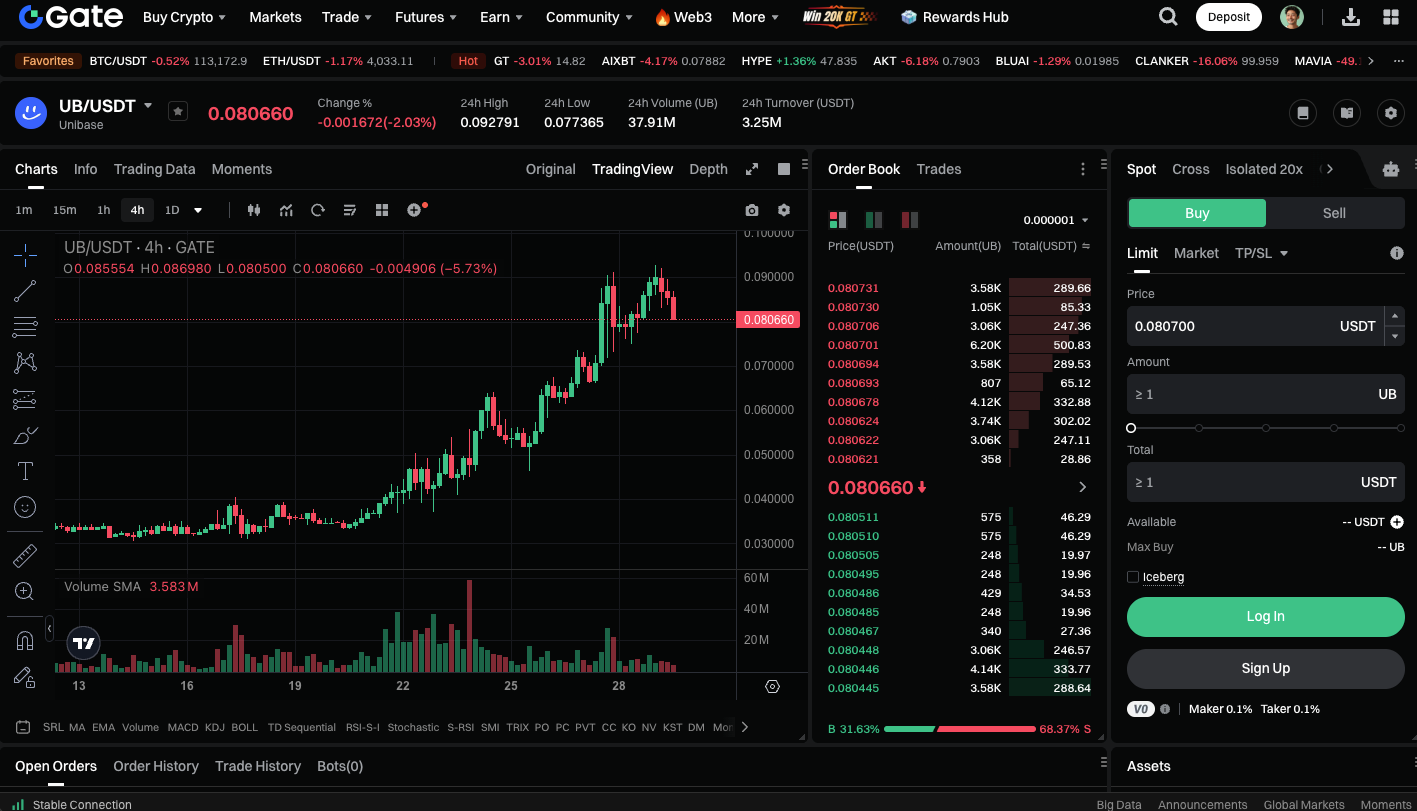What is Unibase (UB)?
What Is Unibase?

(Source: Unibase_AI)
Unibase is a Decentralized AI Memory Layer, purpose-built for autonomous AI agents. Its design is elegantly simple yet profoundly impactful: empowering AI with its own memory and enabling seamless cross-platform communication.
In traditional Web2 architectures, AI and user data are siloed on closed servers, resulting in poor interoperability and stripping users of data sovereignty. Unibase reimagines AI’s cognitive foundation by leveraging on-chain verification, decentralized storage, and encrypted memory layers. This enables agents to share knowledge, build trust, and create an open intelligent network—Open Agent Internet.
The system architecture comprises three core modules:
- Membase — The decentralized AI memory layer, delivering secure, scalable, and persistent intelligent memory.
- AIP Protocol — A cross-protocol interoperability standard designed for intelligent agents.
- Unibase DA — A high-performance data availability layer supporting instant, verifiable data transmission.
Together, these modules form Unibase’s technical backbone, enabling AI agents not only to retain memory but also to connect and comprehend the world.
Three Bottlenecks of Traditional AI
Current AI architectures face three critical challenges:
- Memory Loss (Stateless AI)
Most AI systems operate without persistent state; their memory resets after each interaction, preventing experiential learning. Unibase equips AI with genuine long-term memory, allowing self-evolution based on historical records. - Poor Interoperability (Low Interoperability)
AI systems on different platforms are isolated and unable to share data, leading to redundant knowledge and inefficiency. Unibase’s AIP Protocol establishes a unified language and collaborative framework for AI. - No Data Sovereignty for Users
Existing AI ecosystems are fully controlled by platforms, denying users ownership and benefits from their data. Unibase restores data ownership and value to users through on-chain proof and encrypted verification.
Unibase Technical Architecture
1. Membase — Decentralized Memory Core
Membase serves as the nucleus of the Unibase ecosystem, overseeing agent registration, configuration, memory management, and interaction coordination.
It consists of three main modules:
- Link Hub: Facilitates remote interactions and external connectivity between agents.
- Config Hub: Manages identity, permissions, and settings, supporting agent discovery and queries.
- Memory Hub: Stores long-term records, interaction histories, and contextual data, ensuring coherent and traceable memory.
Membase also establishes agent identities via the on-chain Agent Identity Layer and synchronizes data with Unibase DA, ensuring every record is encrypted, verifiable, and traceable. This endows AI agents with persistent memory and provides transparency and trust throughout the agent network.
2. AIP Protocol — The Universal Language for AI
The AIP (Agent Interoperability Protocol) is Unibase’s cross-agent communication standard, enabling diverse AI systems to converse, collaborate, and share data. It supports MCP (Multi-Agent Communication Protocol) and gRPC, ensuring seamless integration with leading Web3 agent frameworks. Through AIP, AI agents become collaborative nodes, learning from one another, referencing knowledge, and forming task-driven intelligent swarms.
3. Unibase DA — High-Speed Data Availability Layer
Unibase DA is a high-throughput data availability layer engineered for AI, supporting ecosystems like Ethereum, BNB Chain, and OP Stack. Key features include:
- Throughput exceeding 100 GB/s, meeting real-time AI memory access demands.
- zk-SNARK-based verification, guaranteeing data authenticity and tamper resistance.
- Modular architecture, enabling seamless integration with multi-chain and Rollup frameworks.
Unibase DA acts as the circulatory system for AI data, ensuring instant, reliable memory sharing.
What Is Membase?
Membase is the core decentralized AI memory and agent management layer within the Unibase ecosystem. It manages agent identity registration, configuration, memory storage, and supports secure remote interactions—powered by on-chain verification and decentralized storage. At its heart is the agent center, orchestrating interactions between the blockchain and Unibase DA (decentralized data availability layer).

(Source: unibase-docs)
Membase Workflow
Membase’s operational logic is streamlined and efficient:
- Agent Registration: AI agents register their identity and permissions on-chain.
- Data Synchronization: Agent Hub synchronizes registration and configuration data from the blockchain.
- Identity Verification: When agents connect via Link Hub, they undergo on-chain identity verification.
- Configuration Management: Config Hub updates agent operating parameters and permissions.
- Memory Upload: Agents’ interaction records and outputs are uploaded to Memory Hub.
- Persistent Storage: All records are synchronized to Unibase DA for decentralized storage.
This workflow ensures every AI agent’s actions and memory are verifiable, persistent, and trustless.
Unibase Application Ecosystem
Unibase’s technical foundation unlocks a wide range of AI × Web3 use cases:
- BitAgent: A multi-agent collaboration platform for deployment, staking, and automated interactions.
- TwinX: Converts your social accounts (e.g., X / Twitter) into learnable AI avatars with on-chain memory.
- Beeper: Intent-driven encrypted interaction agent for tipping, red packets, and DeFi automation.
- TradingFlow: Automated trading agents powered by natural language strategy generation.
Unibase has also integrated several core protocols and frameworks—MCP, ElizaOS, Virtuals, and Swarms—forming a robust multi-agent foundational ecosystem.
Tokenomics
Unibase’s tokenomics are designed to incentivize intelligent behavior, ensuring every contribution to memory, knowledge, or computation is fairly rewarded. The total supply is 10,000,000,000 UB.
Token Utility
Primary use cases include:
- Protocol Fees: Payments for agent deployment, Membase memory storage, and AIP communication.
- Governance Rights (Governance / veUB): Stake UB to participate in protocol governance and reward allocation.
- Agent Staking: Launching or promoting AI agents requires UB staking, with rewards based on agent activity and performance.
- Knowledge Mining: Users earn UB by contributing prompts, memory data, and reusable knowledge.
Unibase employs the ve(3,3) model, binding governance rights and long-term participation incentives to foster shared growth between contributors and the protocol.
Token Distribution
To ensure sustainable ecosystem development and balanced incentives, UB distribution covers the following segments:
- Community: 40%
- Ecosystem: 10%
- Treasury: 15%
- Team & Advisors: 18%
- Marketing: 10%
- Liquidity: 5%
- Binance Alpha: 2%

(Source: unibase)
Future Roadmap
- 2025 Q4: Launch zk-verified memory layer (Membase Layer) on BNB Chain.
- 2026 Q1: Initiate the Million Memory Node Program, expanding decentralized storage and retrieval capabilities.
- 2026 Q2: Release AIP 2.0, enabling cross-platform AI memory synchronization and agent interoperability.
Unibase’s ultimate goal is to build an open intelligent network where every AI can remember, communicate, learn, and evolve collectively.
Start trading UB spot now: https://www.gate.com/trade/UB_USDT

Summary
While LLMs enable AI to communicate, Unibase empowers AI to remember. It delivers persistent memory to every agent and establishes the foundation for shared intelligence across the entire network. By liberating AI from closed platforms, short-term memory, and centralized data, Unibase paves the way for a truly decentralized, autonomous, and collaborative intelligent world—the Open Agent Internet.
Related Articles

Pi Coin Transaction Guide: How to Transfer to Gate.io

Flare Crypto Explained: What Is Flare Network and Why It Matters in 2025

What is N2: An AI-Driven Layer 2 Solution

How to Use a Crypto Whale Tracker: Top Tool Recommendation for 2025 to Follow Whale Moves

Understand Baby doge coin in one article
